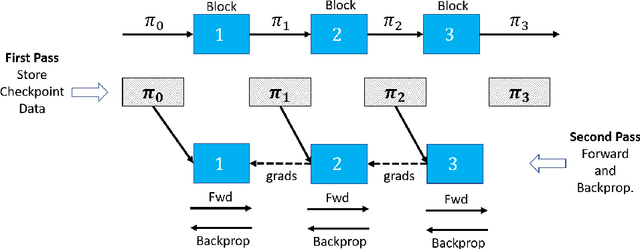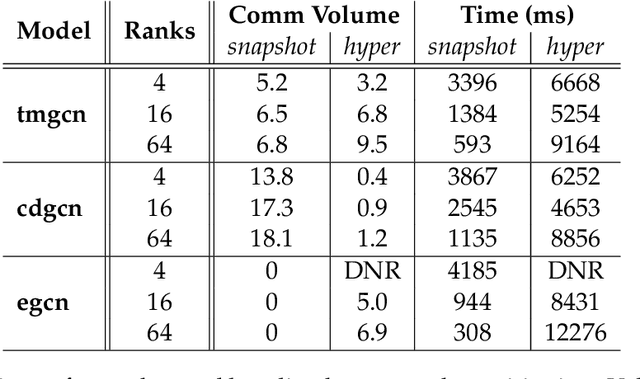Saurabh Raje
Efficient Scaling of Dynamic Graph Neural Networks
Sep 16, 2021



Abstract:We present distributed algorithms for training dynamic Graph Neural Networks (GNN) on large scale graphs spanning multi-node, multi-GPU systems. To the best of our knowledge, this is the first scaling study on dynamic GNN. We devise mechanisms for reducing the GPU memory usage and identify two execution time bottlenecks: CPU-GPU data transfer; and communication volume. Exploiting properties of dynamic graphs, we design a graph difference-based strategy to significantly reduce the transfer time. We develop a simple, but effective data distribution technique under which the communication volume remains fixed and linear in the input size, for any number of GPUs. Our experiments using billion-size graphs on a system of 128 GPUs shows that: (i) the distribution scheme achieves up to 30x speedup on 128 GPUs; (ii) the graph-difference technique reduces the transfer time by a factor of up to 4.1x and the overall execution time by up to 40%
Decentralised firewall for malware detection
Nov 03, 2017



Abstract:This paper describes the design and development of a decentralized firewall system powered by a novel malware detection engine. The firewall is built using blockchain technology. The detection engine aims to classify Portable Executable (PE) files as malicious or benign. File classification is carried out using a deep belief neural network (DBN) as the detection engine. Our approach is to model the files as grayscale images and use the DBN to classify those images into the aforementioned two classes. An extensive data set of 10,000 files is used to train the DBN. Validation is carried out using 4,000 files previously unexposed to the network. The final result of whether to allow or block a file is obtained by arriving at a proof of work based consensus in the blockchain network.
 Add to Chrome
Add to Chrome Add to Firefox
Add to Firefox Add to Edge
Add to Edge